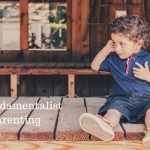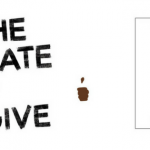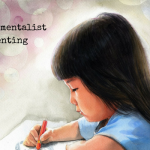My newsfeed has been awash with lament over the tragedies occurring all over the country. From the mass shootings in Orlando to the trending hashtags of yet more black men executed on the streets and the subsequent sniper shootings of police officers. Although it’s good to remember the violence isn’t new, it is the smartphone footage and rise of social media that is searing the violence so poignantly into the public consciousness, it seems as though everyone is left grieving, lamenting, trapped in a panicky helplessness.
In these uncertain and terrifying times, what may be on Christian parent’s hearts is how to offer comfort to our children when our own hearts are filled with anxiety? For this, I suggest the wonderful post by Tanya Marlow curating several tools for your parenting toolbox.
But after lament, it is time to get to work. Christian parents have a responsibility to raise our children in such a way as to counter the darkness with light. To launch our children into the world bearing peace to resist the culture of violence.
Carl Stauffer, in his chapter Rescripting Youth Education in the book Faith Forward, says this:
“We live by social scripts that form our identities, world views, and actions, which in turn inform the organizational structures, institutions, and networks that we create in society around us. Just as we are able to socially construct our reality through narrative, so we can de-construct our social reality if it becomes violent or destructive through the new narratives we choose to internalize.”
As parents, we have the privilege of offering an alternative script that contributes to the identity formation of our children, and collectively turn these individual scripts into changing the tide of systemic culture. If violence can be institutionalized through violent narratives, then it can be deconstructed with a peaceful one. And that work begins in our homes.
Here are three ways we can begin this work:
One: #NoJusticeNoPeace. The work of raising peacemakers must be grounded in the why before the how. The why of peace is justice. The reason we promote peace isn’t to avoid conflict or to chase elusive woo-woo brand of happiness, it is because peace-making is the natural consequence of justice. The biblical basis for justice is found in the simple fact that each one of us are made in the image of God, every life is equal in value regardless of race, gender, orientation, class, and age. This begins by Christian parents treating our children with mutuality, respect, and value. Only when they experience justice and liberation can they become arbiters of peace. The seeds of peace are sown in a soil of justice. Don’t forget that children have an excellent radar for justice, if you can recall your children’s loud laments of “That’s NOT FAIR!!” Let them contribute to the conversations of what constitutes fairness, justice, and equality for all.

Image: Pixabay
Two: Consume and Create Stories of Peace. The status quo provides a steady stream of narrative constructs that feed homophobia, racism, and sexism which unfortunately leads directly to hate crimes and violent deaths. What we need to do is resist those narrative and replace it with alternative stories of peace. Tell our children stories from Scripture of peacemakers such as Joseph’s forgiveness of his brothers, or the Apostle Peter feeding strangers from his roof. Repeat tales of peacemaking heroes from beyond Scripture like one of my favorite, Malala Yousafzai, who resisted the the Taliban’s violent regime as a child herself. Many teens now have their lives shaped not by traditional media but on outlets like snapchat and twitter. Highlight life-giving feeds like the recent hashtag #BlackMenJoy that reverse the narrative of violent black men.
But don’t stop at consuming stories, encourage your children to imagine their own. The act of creativity itself is a powerful resistance to violence, as it is an act that creates life instead of taking one. Performance arts especially, is a social transformational tool that invites the community to participate. With younger kids, we can encourage them to draw pictures of what peace looks like. When asked to do so, one child drew a picture of her Grandma giving her a cookie. (Faith Forward, Chapter 8) With older kids, they can use the mediums available to them such as youtube or tumblr to create spoken word videos or any other imaginative works that they believe may bring more peace through art.
Three: Dare to Make Peace. Making peace requires a vocabulary of de-escalating conflict and reconciliation, many of which can be practiced within family interactions. Instead of saying, “You always do this because you hate me!”, show our children alternative language such as, “When you say this I feel hurt because of that.” Give them tools to turn to before reaching for emotional weapons aimed at delivering hate. Of course, this must first be modeled in the way we treat our children, that we do the hard work of de-escalating our own anger and use connection instead of control in our parenting.
Amy Gingrich and Rebecca Seiling (Faith Forward, chapter 8) suggests making a list of concrete actions to take that de-escalate conflict and promotes radical peacemaking. They call it, “Dare to Make Peace.” Examples include age appropriate practices such as:
- make a snack and share it with your enemy
- forgive your siblings for something they did to hurt you
- ask someone who is alone at school to play with you
- welcome a stranger into your home
In closing, I’d like to circle back to point number one. Children require security and stability to feel whole. In teaching about peacemaking, they may be inclined to bear the emotional burden of making peace by sacrificing their own needs. It’s important to ensure they understand that without justice there can be no true peace. Peace doesn’t occur when the marginalized are kept in quiet submission. And children, by their vulnerable position in society, are a marginalized group. In instilling peacemaking virtues in our children, we must help them find a voice and stake their space in the world. Our best bet for working towards shalom is to ensure every vulnerable person is lifted into equality, and that includes our children.
No justice, no peace.
















